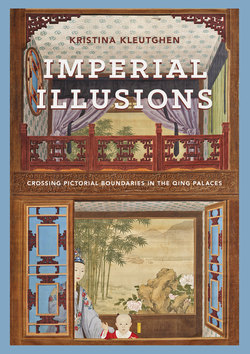Читать книгу Imperial Illusions - Kristina Kleutghen - Страница 35
На сайте Литреса книга снята с продажи.
ОглавлениеONE
Painted Walls and Pictorial Illusions
EARLY CHINESE RESPONSES TO EXAMPLES OF PICTORIAL ILLUSIONISM intended to deceive are strikingly similar to the tropes in the European tradition. Just as Zeuxis fooled a bird into thinking his painted grapes were real, Xu Mao (act. mid-third century) painted a perch so realistic that it lured a raft of rare white otters into capture for King Cao Rui (r. 226–39) of the state of Cao Wei.1 As Zeuxis himself was fooled by Parrhasius, Xun Xu (?–289) chose to repay a practical joke by painting a figure of the prankster’s deceased grandfather on a wall of the man’s new house. Xun rendered the ancestor so convincingly that the man and his siblings, certain they saw a ghost, abandoned the house in terror. After accidentally dropping his brush onto the white silk of a screen painting for the Wu Kingdom ruler Sun Quan (c. third century), Cao Buxing (act. third century) cleverly transformed the splattered ink dots into a fly. The result was so realistic that the king himself was fooled and tried to brush the fly off the surface of the screen. More than a thousand years later, in fifteenth- and sixteenth-century Italy, the addition of an illusionistic fly or a bee rendered so skillfully that the viewer would try to brush it away from the surface of the painting became a particularly popular device. Even when mentioned in literature, this addition that was otherwise unrelated to the painting evoked illusionistic skill in the tradition of Zeuxis and Parrhasius.2
This scant cluster of third-century responses is all the evidence that remains of Xu Mao, Xun Xu, Cao Buxing, and their works. Yet even these three anecdotes begin to
